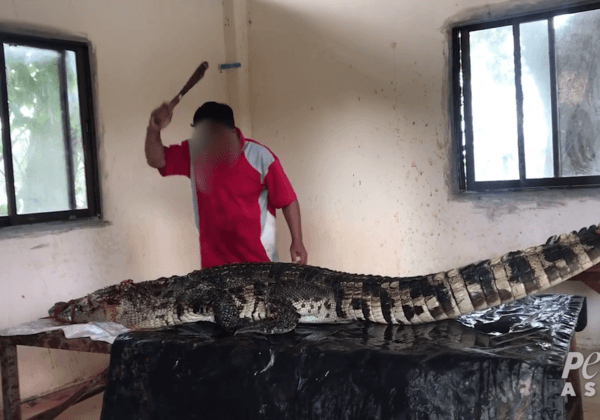Denmark to Kill 17 Million Minks After Coronavirus Mutation Spreads to Humans
Blood, suffocation, death, and … pandemics? No, we’re not talking about live-animal markets, like the one where COVID-19 is believed to have originated. We’re talking about another hotbed for contagious diseases: fur farms.
Minks are raised for slaughter on farms in Denmark, where a mutation of the virus that causes COVID-19 has jumped from minks to humans, infecting at least 12 people as of November 4. Kare Molbak, a director at a Danish research institute, said, “The worst case scenario is a new pandemic, starting all over again out of Denmark”—something that PETA predicted months ago.
Denmark has since announced plans to kill up to 17 million minks who have already been bred on its farms in an attempt to curb the spread of the mutated virus—one that could have “devastating consequences worldwide,” according to Mette Frederiksen, the country’s prime minister.
Millions of minks to be culled in Denmark after mutated version of Covid-19 that can spread to humans was detected on mink farms https://t.co/RBWAmByycR
— BBC News (World) (@BBCWorld) November 4, 2020
“China, Denmark, and Poland should support and extend the immediate and complete ban of mink production,” said scientists from China, Denmark, and Malaysia in an article in Science magazine’s October 2020 issue.
Cramming animals together in filthy conditions caused the novel coronavirus pandemic, and as this latest incident in Denmark proves, it also causes mutations. We cannot expect better results—or a cure—if we continue along the same path. “The mutated virus in mink may pose a risk to the effectiveness of a future vaccine,” Frederiksen stated.
No one needs a mink coat, but we do need a vaccine, which is why all fur farms should be shut down for good—now.
Pathogens flourish on fur farms as well as in live-animal markets. So when it comes to the public health risks that they pose, these bloody environments are no different. As we’ve seen with numerous global health scares, deadly diseases can spread to humans in places where animals are kept in close confinement or killed.
What Do Animals on Fur Farms Endure?
Animals raised for their fur—including minks, foxes, and raccoon dogs—are typically confined to cramped wire cages. Many don’t have enough room to turn around or even fully stretch out. The conditions that they’re forced to live in are filthy. As a result of severe stress, animals on fur farms resort to self-mutilation or cannibalization of their cagemates. Injured animals in the fur industry commonly receive no veterinary care.
Do Diseases Start on Fur Farms?
On today’s squalid fur farms, animals are confined to cramped wire cages. This allows for urine, excrement, pus, and blood to flow from one adjacent or stacked cage to another. Animals with infections, sores, and festering wounds caused by the hard wire that they’re forced to stand on are a common sight.
In these conditions, contagious diseases can easily spread among the animals or even to human workers.

According to reports, two mink farms in the Netherlands raised animals who tested positive for coronavirus. The two farms, with more than 20,000 minks between them, are located in Noord-Brabant, both the epicenter of the COVID-19 outbreak in the country and the heart of the Dutch mink industry.
Which Diseases Start on Fur Farms?
A wide range of pathogens can infect foxes, raccoon dogs, and minks. Some of these diseases, including tularemia, hepatitis E, and influenza, are zoonotic, meaning that they can spread from animals to humans.
Hepatitis E, a viral disease, can cause swelling of the liver, jaundice, and lack of appetite in humans. Tularemia is a bacterial disease that fur handlers commonly suffer from—and just a small number of bacteria can cause potentially lethal infections.
And it’s not just the workers on fur farms who are at risk. Any industry in which humans handle animals poses a risk of animal-to-human transmission of a newly evolved virus and outbreaks of disease.
What You Can Do to Help
Please, never buy fur. Companies pay attention to consumers’ opinions and make decisions based on what people are buying. Show this video to others, too.









